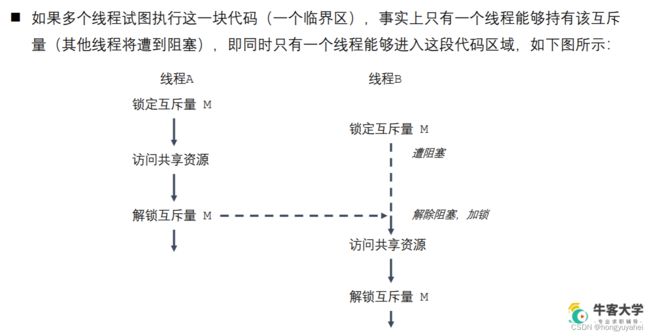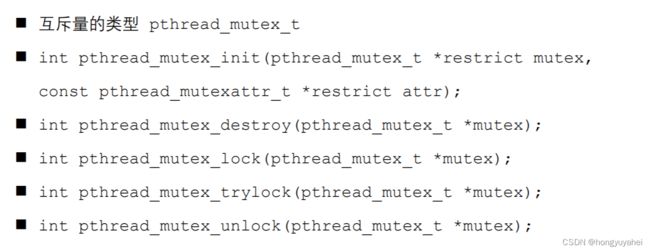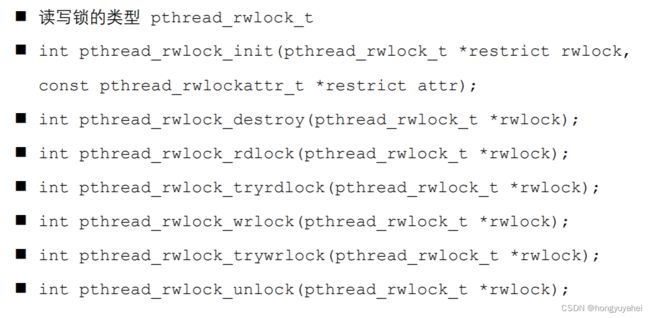3.8 线程同步 3.9互斥锁 3.10死锁 3.11读写锁
3.8 线程同步
问题:卖第0张、第-1张门票,三个线程买同一张门票等等。
原因:三个线程并发执行去抢占线程资源,A进来休眠6000微秒的时候,B、C也可能进来。多个线程同时处理一个共享资源,出现线程同步问题,操作必须是原子性的。
/*
使用多线程实现买票的案例。
有3个窗口,一共是100张票。
*/
#include 3.9互斥锁
互斥量
互斥量相关操作函数
#include 3.10死锁
#include 上述代码产生死锁:线程1获得锁1且申请锁2,线程2获得锁2且申请锁一。
产生死锁的四个必要条件:
互斥条件、占有且等待条件、不可抢占条件、循环等待条件。
3.11读写锁
读写锁
读写锁比互斥锁效率要高一点,读的时候是并发执行,而互斥锁是串行。
读写锁相关操作函数
#include 










